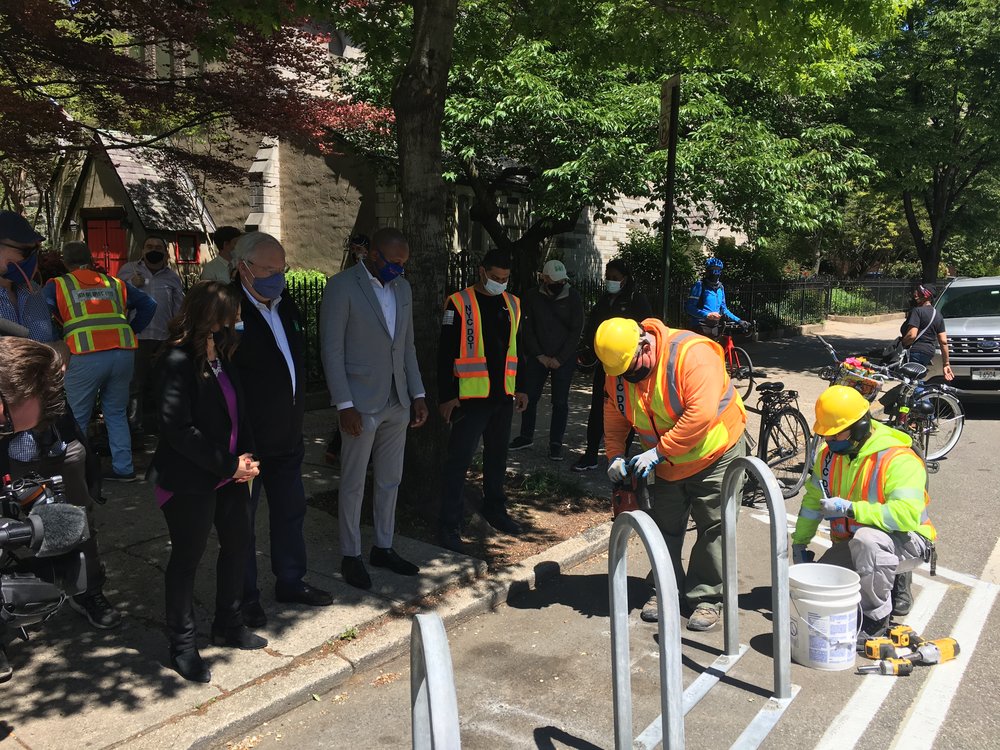The two-story “Floating Leaves” sculpture at the shuttered Parkside Chapel at 98-60 Queens Boulevard in Rego Park was recently relocated off-site. Now, the Rego-Forest Preservation Council is working to secure a new home for the piece by the late sculptor Arnold Stone.
Stone, an award-winning artist and dentist, passed away at the age of 49 in 1971. But his memory is very much alive thanks to daughter Paula Stone Borge and stepson Robert Andrew McKie, who are preserving his artwork and sharing stories.
A native of Boston, Stone lived in Flushing and Bayside, before finally settling in Sea Cliff on Long Island.
“The town was filled with sailors, musicians, painters, sculptors, and writers,” Stone Borge said. “Children were free to explore the many parks and beaches and ride bicycles everywhere. Our living room was always filled with a diverse group chatting about the social and political concerns of the day.”
Her room overlooked her father’s studio, where “Floating Leaves” was created.
“I think the contrast between the strong straight-edged lattice and the flowing leaves filled with streaming water is like modern architecture set among natural elements,” Stone Borge said of the artwork.
“I felt happy falling asleep to the sound of his sledgehammer hitting the anvil,” she added. “I loved the cozy feeling of knowing he was in the studio, doing something he loved.”
Her father created many smaller sculptures for private collections and public space, but “Floating Leaves” was his largest public work. She explained his passion for fountains.
“It provides a lovely atmosphere for reflection and meditation and symbolizes the flow of life,” Stone Borge said. “His goal with this fountain was to provide a simple, beautiful, peaceful space for feelings and thoughts.”
She and her brother take pride in being the stewards of some of his sculptures.
“But he made so many, and we do not know who bought them and where they are,” Stone Borge said. “We would love to know who has the largest anti-war piece, a soldier’s head mounted on two large wagon wheels balanced by two bowling balls below, and we would like to know about a very tall life-sized “Metamorphosis.”
“We would like to know about any of his works, since we have no records,” she added.
Stone Borge said she admired her father’s love of life and curiosity about everything.
“He helped me learn how to find joy and wonder in almost everything, and to approach life with empathy, affection, humor, and gratitude,” she said.
McKie remembers Sea Cliff in 1958 for its great mixture of residents.
“On our street, we had a Wall Street lawyer living next to a plumber, who in turn had a concert violist as a neighbor,” he recalled.
McKie pointed out that while Dr. Stone served his dental practice patients with care until his death, his heart was not in it.
“He would often duck out between scheduled patients to work in the studio,” he said. “His arms became very muscular with all the metal and stone work. He would work long hours in the studio, often just dashing to eat quickly and return.”
McKie hopes “Floating Leaves” finds a special home, as it was designed to fit a corner alcove.
“As for other works, I would love to see them on public display permanently,” he said. “I would consider giving up ‘Mississippi Jury’ to the right venue.”
McKie also owns one small painting from of a series of clowns and mimes, an alabaster hippopotamus, an oil painting of a hippo, a bronze seagull, and his stepfather’s record collection.
Many friends from his Sea Cliff days have pieces of Stone’s artwork, including Jerry Zimmermann.
“Arnie will never die,” Zimmerman said. “He is a force in all of our memories. The 50 years from his passing seems like an instant relative to the force of his being.”




